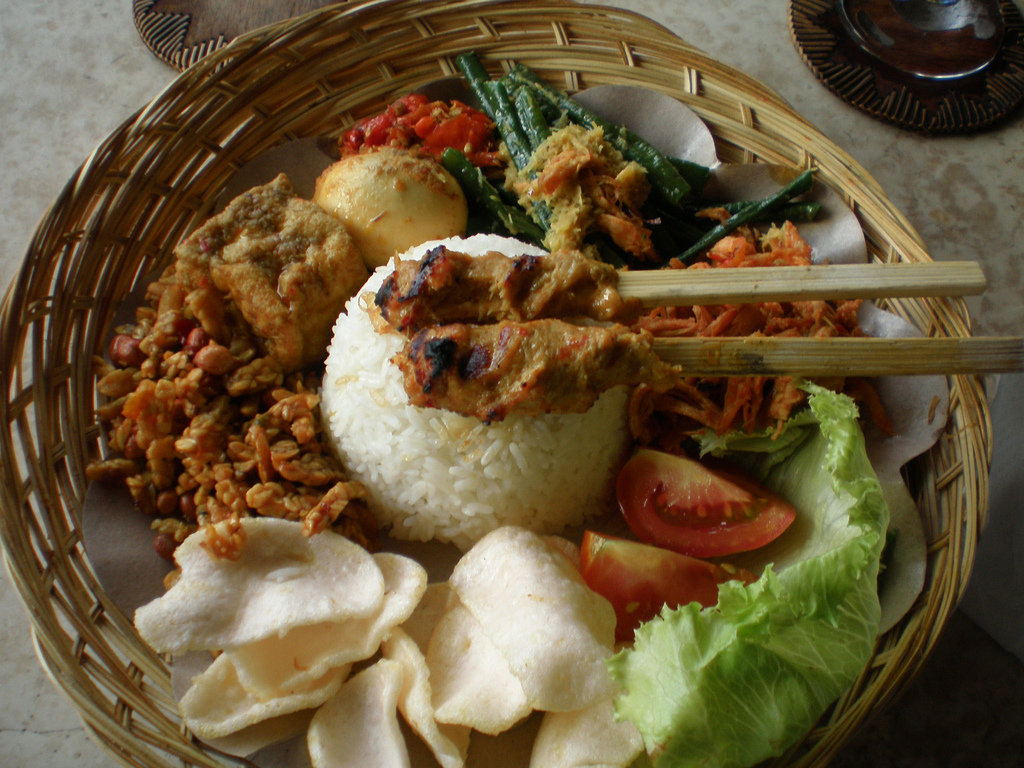|
Gaifan
''Gaifan'' () or ''gaijiaofan'' () is a type of dish in Chinese cuisine typically offered in low-cost establishments. It consists of a fish, meat, or vegetable topping served over rice. The dish can be either freshly cooked or previously cooked, such as char siu. According to the ''Commentary to the Classic of Rites'', gaifan can be dated back to Western Zhou. Throughout the Tang dynasty, gaifan was served during the banquets of newly promoted officials. Wei Juyuan, ''Menu'', "sliced meat and egg with oil, cover on rice, mixed flavour." 韦巨源 《食单》:“编缕卵脂,盖饭表面,杂味。” Gallery File:Kung Pao Chicken.jpg, Kung Pao chicken gaifan File:Khao mu krop mu daeng.jpg, Thai-Chinese char siu ''Char siu'' () is a Cantonese-style barbecued pork. Originating in Guangdong, it is eaten with rice, used as an ingredient for noodle dishes or in stir fries, and as a filling for '' cha siu bao'' or pineapple buns. Five-spice powder is t ... gaifan Imag ... [...More Info...] [...Related Items...] OR: [Wikipedia] [Google] [Baidu] |
Kung Pao Chicken
Kung Pao chicken (), also transcribed Gong Bao or Kung Po, is a spicy, stir-fried Chinese dish made with cubes of cooked chicken, peanuts, vegetables and chili peppers, and Sichuan peppercorns. From its origins in Sichuan cuisine, the dish's popularity has spread throughout China, spawning a number of regional variations—some of which are less spicy than the classic version. History Qing Dynasty The dish's origins are uncertain, but are believed to be named after Ding Baozhen (1820–1886), a late Qing Dynasty official and governor of Sichuan Province. His title was ''Taizi Shaobao'', which is one of the ''Gongbao'' (). The name ''Kung Pao chicken'' is derived from this title, while the use of the character ''dīng'' in the name of the dish is a pun on his surname ''Dīng'', a moderately common Chinese surname that can also be read to mean "small cube" (like the cubes the chicken is diced into for the dish). Cultural Revolution During the Cultural Revolution, the dis ... [...More Info...] [...Related Items...] OR: [Wikipedia] [Google] [Baidu] |
Chūkadon
is a Japanese fast-food dish. It consists of a bowl of rice with stir-fried vegetables, onions, mushrooms, and thin slices of meat on top. Literally meaning " Chinese rice bowl", it is inspired by Chinese cuisine. It is a kind of donburi is a Japanese "rice-bowl dish" consisting of fish, meat, vegetables or other ingredients simmered together and served over rice. ''Donburi'' meals are usually served in oversized rice bowls which are also called ''donburi''. If one needs to .... References Japanese Chinese cuisine Japanese fusion cuisine Japanese rice dishes {{Chinese-fusion-cuisine-stub ... [...More Info...] [...Related Items...] OR: [Wikipedia] [Google] [Baidu] |
Char Siu
''Char siu'' () is a Cantonese-style barbecued pork. Originating in Guangdong, it is eaten with rice, used as an ingredient for noodle dishes or in stir fries, and as a filling for '' cha siu bao'' or pineapple buns. Five-spice powder is the primary spice, honey or other sweeteners are used as a glaze, and the characteristic red color comes from the red yeast rice when made traditionally. It is classified as a type of '' siu mei'' (), Cantonese roasted meat. Meat cuts Pork cuts used for ''char siu'' can vary, but a few main cuts are common: * Pork loin * Pork belly – produces juicy and fattier ''char siu'' * Pork butt (shoulder) – produces leaner ''char siu'' * Pork fat * Pork neck end – very marbled (''jyu geng yuk'') Cultural variations Cantonese cuisine ''Char siu'' literally means "fork roasted" (''siu'' being burn/roast and ''cha'' being fork, both noun and verb) after the traditional cooking method for the dish: long strips of seasoned boneless pork a ... [...More Info...] [...Related Items...] OR: [Wikipedia] [Google] [Baidu] |
Classic Of Rites
The ''Book of Rites'', also known as the ''Liji'', is a collection of texts describing the social forms, administration, and ceremonial rites of the Zhou dynasty as they were understood in the Warring States and the early Han periods. The ''Book of Rites'', along with the '' Rites of Zhou'' () and the '' Book of Etiquette and Rites'' (), which are together known as the "Three Li ()," constitute the ritual () section of the Five Classics which lay at the core of the traditional Confucian canon (each of the "five" classics is a group of works rather than a single text). As a core text of the Confucian canon, it is also known as the ''Classic of Rites'' or ''Lijing'', which some scholars believe was the original title before it was changed by Dai Sheng. History The ''Book of Rites'' is a diverse collection of texts of uncertain origin and date that lacks the overall structure found in the other "rites" texts (the '' Rites of Zhou'' and the '' Etiquette and Ceremonial''). So ... [...More Info...] [...Related Items...] OR: [Wikipedia] [Google] [Baidu] |
Western Zhou
The Western Zhou ( zh, c=西周, p=Xīzhōu; 771 BC) was a period of Chinese history corresponding roughly to the first half of the Zhou dynasty. It began when King Wu of Zhou overthrew the Shang dynasty at the Battle of Muye and ended in 771 BC when Quanrong pastoralists sacked the Zhou capital at Haojing and killed King You of Zhou. The "Western" label for the period refers to the location of the Zhou royal capitals, which were clustered in the Wei River valley near present-day Xi'an. The early Zhou state was ascendant for about 75 years; thereafter, it gradually lost power. The former lands of the Shang were divided into Ancient Chinese states, hereditary fiefs that became increasingly independent of the Zhou king over time. The Zhou court was driven out of the Wei River valley in 771 BC: this marked the beginning of the Eastern Zhou period, wherein political power was wielded in actuality by the king's nominal vassals. Sources The Western Zhou are known from ... [...More Info...] [...Related Items...] OR: [Wikipedia] [Google] [Baidu] |
Tang Dynasty
The Tang dynasty (, ; zh, c=唐朝), or the Tang Empire, was an Dynasties of China, imperial dynasty of China that ruled from 618 to 907, with an Wu Zhou, interregnum between 690 and 705. It was preceded by the Sui dynasty and followed by the Five Dynasties and Ten Kingdoms period. Historians generally regard the Tang as a high point in Chinese civilisation, and a Golden age (metaphor), golden age of cosmopolitan culture. Tang territory, acquired through the military campaigns of its early rulers, rivalled that of the Han dynasty. The House of Li, Li family founded the dynasty after taking advantage of a period of Sui decline and precipitating their final collapse, in turn inaugurating a period of progress and stability in the first half of the dynasty's rule. The dynasty was formally interrupted during 690–705 when Empress Wu Zetian seized the throne, proclaiming the Wu Zhou dynasty and becoming the only legitimate Chinese empress regnant. The An Lushan rebellion (755 ... [...More Info...] [...Related Items...] OR: [Wikipedia] [Google] [Baidu] |
Wei Juyuan
Wei Juyuan (; 631 – July 22, 710), posthumous name Duke Zhao of Shu (舒昭公), was an official of the Tang and Wu Zhou dynasties of China, serving multiple times as chancellor during the reigns of Wu Zetian, her son Emperor Zhongzong, and her grandson Emperor Shang. During Emperor Zhongzong's reign, he became aligned with Emperor Zhongzong's powerful wife Empress Wei, and after Emperor Zhongzong's death in 710 and a coup led by Emperor Zhongzong's sister Princess Taiping and Emperor Zhongzong's nephew Li Longji the Prince of Linzi killed Empress Wei, Wei Juyuan was also killed. Background Wei Juyuan was born in 631, during the reign of Emperor Taizong. He was a fourth-generation descendant of the Western Wei and Northern Zhou general Wei Xiaokuan, and his grandfather Wei Kuangbo (韋匡伯), who was a duke during the Tang dynasty's predecessor and Northern Zhou's successor, the Sui dynasty, based on Wei Xiaokuan's achievements. Wei Juyuan's father Wei Siren (韋思仁) was ... [...More Info...] [...Related Items...] OR: [Wikipedia] [Google] [Baidu] |
Donburi
is a Japanese "rice-bowl dish" consisting of fish, meat, vegetables or other ingredients simmered together and served over rice. ''Donburi'' meals are usually served in oversized rice bowls which are also called ''donburi''. If one needs to distinguish, the bowl is called and the food is called . The simmering sauce varies according to season, ingredients, region, and taste. A typical sauce might consist of ''dashi'' (stock broth) flavored with soy sauce and ''mirin'' (rice wine). Proportions vary, but there is normally three to four times as much ''dashi'' as soy sauce and ''mirin''. For '' oyakodon'', Tsuji (1980) recommends dashi flavored with light soy sauce, dark soy sauce, and sugar. For ''gyūdon'', Tsuji recommends water flavored with dark soy sauce and ''mirin''. Donburi can be made from almost any ingredients, including leftovers. Varieties of donburi Traditional Japanese ''donburi'' include the following: ''Gyūdon'' , is a Japanese dish consisting of a bow ... [...More Info...] [...Related Items...] OR: [Wikipedia] [Google] [Baidu] |
Economy Rice
Economy rice or economic rice () is a type of food or food stall serving many dishes accompanied by rice, commonly found in hawker centres, street vendors or food courts in Malaysia and Singapore. Specifically in Singapore, it is commonly known as cai png, from the Hokkien zh, s=菜饭, poj=chhài-pn̄g, p=cài fàn, labels=no. In recent times, due to COVID-19 restrictions and the associated economic effect, this concept has also become popular in Hong Kong. Economy rice stalls typically consist of a case containing anywhere from 10 to 15 troughs of cooked dishes, including meat, seafood, vegetables, eggs and tofu. Customers select any combination of these dishes, which are served accompanied by a portion of steamed white rice. Customers also have the option of a serving of curry or gravy to be served atop the steamed rice. In Singapore, it is more common to find the food on open troughs kept warm by hot water and an electric heater below. Origins Economy rice is thought of as ... [...More Info...] [...Related Items...] OR: [Wikipedia] [Google] [Baidu] |




